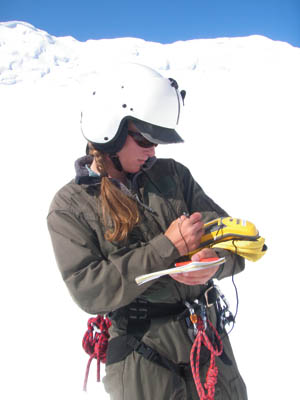
Katie Goodwin, MSES, 2011
Short- and longterm effects of crevassing human waste in a glacial environment are poorly understood despite their implications for human health and water quality.
Using field observations and lab experiments, this thesis investigated the microbiological fate of human feces deposited in a variety of subarctic glacial microclimates. An estimated 110 metric tons of human waste have been left since 1970 by climbers on Mount McKinley; North America’s highest peak attracts roughly 1,000 climbers annually.
Survival of fecal microorganisms in this variety of glacial environments is greater than expected. Results of this study suggest that coliform bacteria in waste deposited on the Kahiltna Glacier may survive decades of burial.
